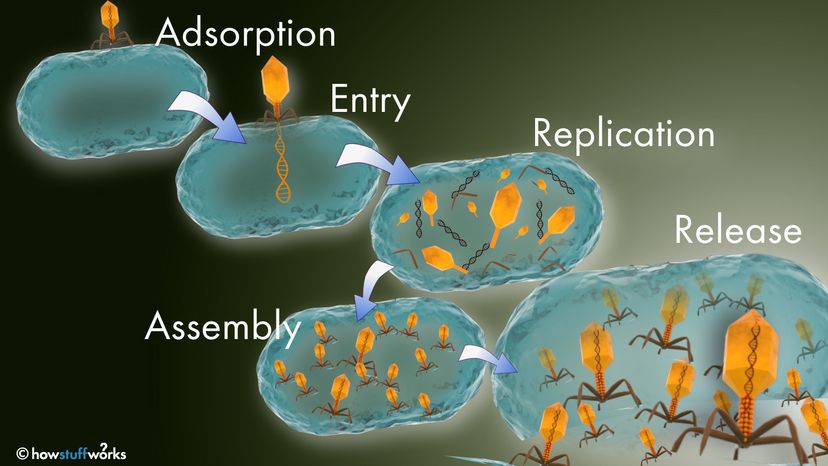How a Virus Infects You

Viruses lie around our environment all of the time just waiting for a host cell to come along. They can enter us through the eyes, nose, mouth or breaks in the skin (see How the Immune System Works for details). Once inside, they find a host cell to infect. For example, cold and flu viruses will attack cells that line the respiratory or digestive tracts. The human immunodeficiency virus (HIV), which causes AIDS, attacks the T-cells of the immune system.
Regardless of the type of host cell, viruses follow the same basic steps to replicate:
Advertisement
- A virus particle attaches to a host cell.
- The particle releases its genetic instructions into the host cell.
- The injected genetic material recruits the host cell's enzymes.
- The enzymes make parts for more new virus particles.
- The new particles assemble the parts into new viruses.
- The new particles break free from the host cell.
All viruses have some type of protein on the outside coat or envelope that "feels" or "recognizes" the proper host cell(s). This protein attaches the virus to the membrane of the host cell. Some enveloped viruses can dissolve right through the cell membrane of the host because both the virus envelope and the cell membrane are made of lipids.
Those viruses that do not enter the cell must inject their contents (genetic instructions, enzymes) into the host cell. Those viruses that dissolve into a cell simply release their contents once inside the host. In either case, the results are the same.